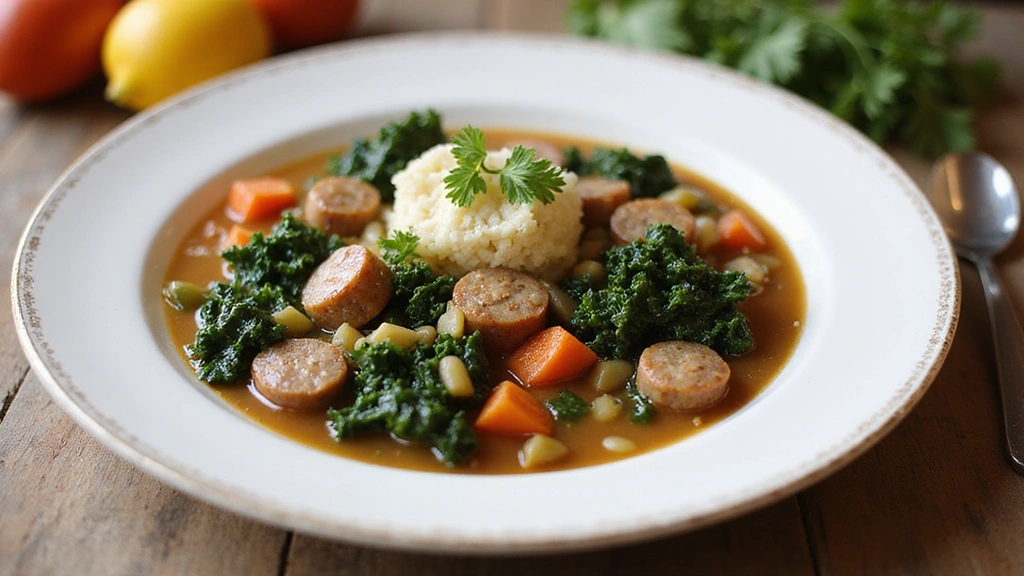This classic Tuscan Zuppa Toscana brings together centuries of culinary tradition with modern techniques to create a dish that’s both comforting and elegant.
The harmonious balance of spicy sausage, hearty potatoes, and vibrant kale creates a memorable dining experience that will have everyone asking for your secret.
I discovered this recipe during my travels through Tuscany, where local chefs have perfected it through generations of careful refinement.
Whether you’re preparing a casual family dinner or hosting a special celebration, this Tuscan Zuppa Toscana delivers impressive results with straightforward preparation.
The History and Cultural Significance
• Tuscan Zuppa Toscana traces its origins to the rural kitchens of Tuscany, where it was originally created by peasant families using affordable, local ingredients.
• The dish evolved over decades as it became popular in restaurants, eventually becoming the beloved version we know today with a focus on rich flavors and heartiness.
• In Italian culture, this dish traditionally appears at family gatherings and celebrations, symbolizing warmth and togetherness.
• While many variations exist across different regions, the authentic version maintains a creamy broth and the addition of kale that sets it apart from imitations.
Recipe Overview
Nutritional Information (per serving)
Essential Equipment Guide
Heavy Bottom Pot: A heavy bottom pot is crucial for even heat distribution when simmering the soup. Look for a pot that is at least 5 quarts to accommodate all the ingredients without overflowing. Avoid thin pans, as they can cause uneven cooking and scorching.
Wooden Spoon: A sturdy wooden spoon is preferred for stirring the ingredients in the pot. It’s gentle on the pot’s surface and allows for effective mixing without scratching. Consider choosing one with a long handle for better reach and stirring.
Immersion Blender: An immersion blender allows you to blend the soup directly in the pot, creating a creamy texture without transferring to a blender. If you don’t have one, a regular blender can be used, but ensure you let the soup cool slightly before blending.
Key Ingredients Explained
For Sausage:
• 1 pound Italian sausage, casings removed – Choose high-quality, fresh Italian sausage for the best flavor. Look for products with a balanced mix of meat and spices. If unavailable, ground turkey or chicken can be used, but the flavor profile will be lighter.
• 4 cups chicken broth – Opt for low-sodium chicken broth to control the saltiness of the soup. Homemade broth is ideal, but store-bought can work in a pinch. Vegetable broth can substitute for a vegetarian version.
For Kale:
• 2 cups kale, chopped and stems removed – Fresh kale is essential for the dish’s flavor and texture. Look for vibrant green leaves without yellowing. If kale is unavailable, Swiss chard or spinach can be used, but they will change the soup’s flavor.
Preparation Methods
Sautéing: Sautéing is a technique used to cook the sausage and vegetables at high heat in a small amount of oil. This method helps develop deep flavors and caramelization. Ensure the pan is hot before adding ingredients to achieve a good sear.
Simmering: Simmering involves cooking the soup gently over low heat after it reaches a boil. This method allows flavors to meld together without breaking down the ingredients too much. Keep an eye on the heat to avoid boiling, which can lead to a gritty texture.
Blending: Blending the soup with an immersion blender creates a creamy consistency without fully pureeing it. This technique allows for a mix of textures in the soup. Blend in batches if using a traditional blender, and allow the soup to cool slightly to prevent splattering.
Step 1: Prepare Ingredients
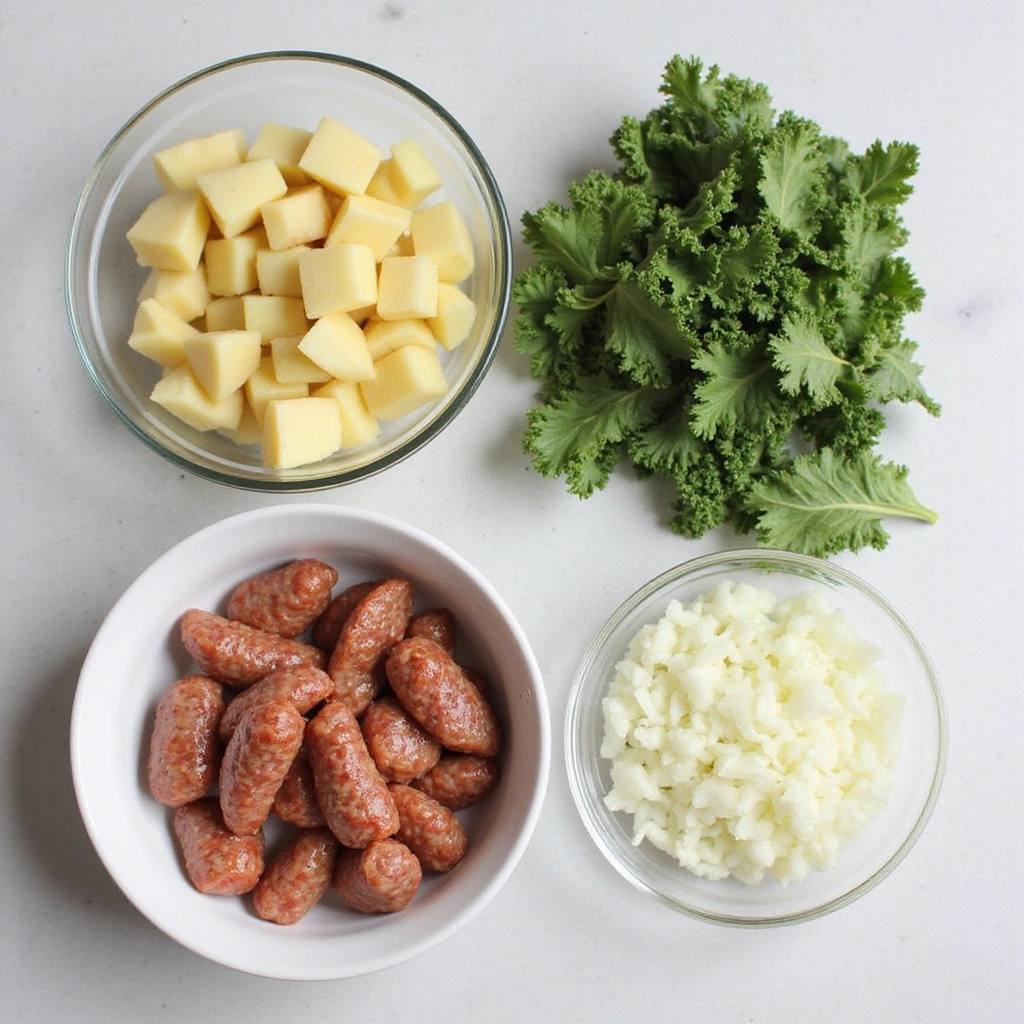
Gather all the necessary ingredients for the soup.
This includes Italian sausage, kale, potatoes, onion, garlic, and chicken broth.
Ensure you have fresh ingredients, especially the kale, for the best flavor.
Wash and chop the kale, peel and dice the potatoes, and finely chop the onion and garlic.
Step 2: Cook the Sausage

In a heavy bottom pot, heat a tablespoon of oil over medium heat.
Add the Italian sausage, breaking it apart with a wooden spoon as it cooks.
Cook until the sausage is browned and fully cooked, approximately 7-10 minutes.
Look for a nice brown color on the sausage to develop rich flavors.
Step 3: Add Onions and Garlic
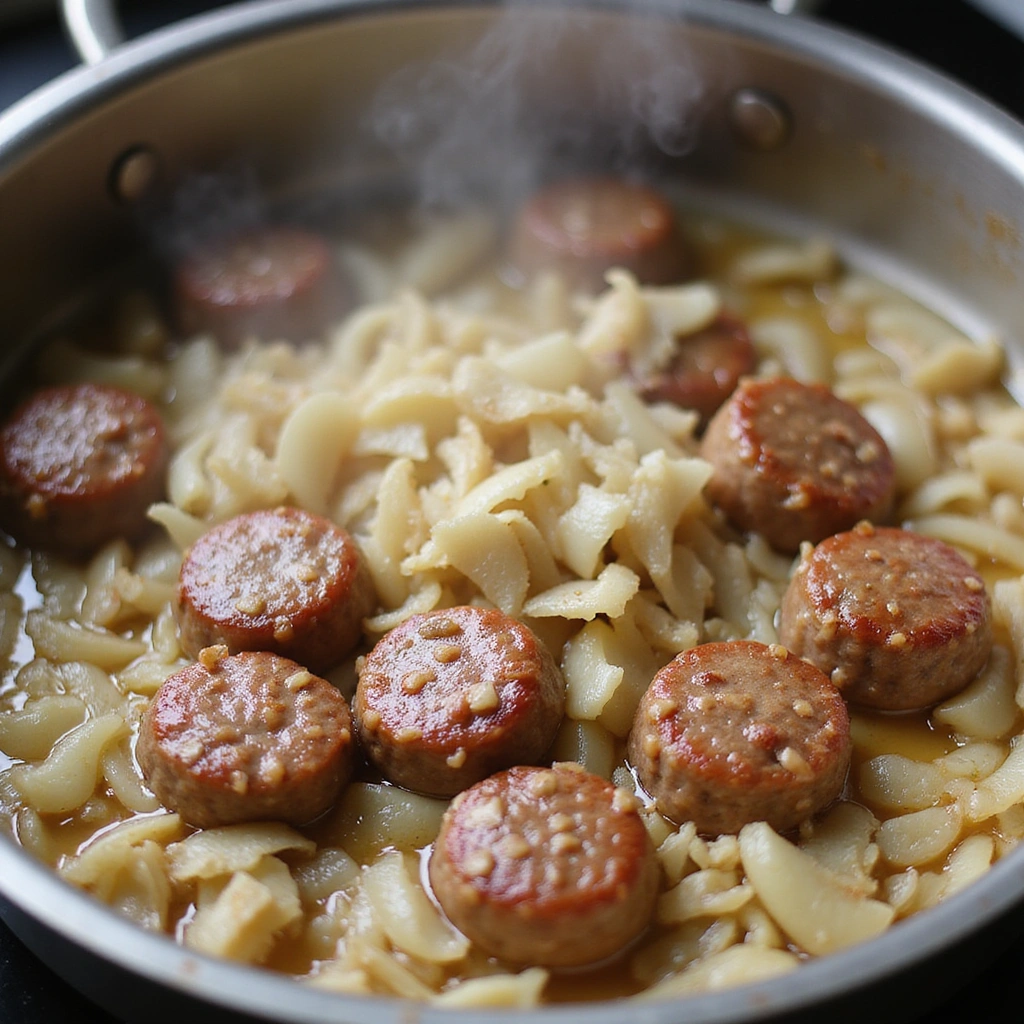
Once the sausage is cooked, add the diced onion and minced garlic to the pot.
Sauté for about 3-5 minutes until the onion becomes translucent and fragrant.
Stir frequently to prevent the garlic from burning, which can create a bitter taste.
Look for the onions to soften and turn a light golden color.
Step 4: Add Potatoes and Broth
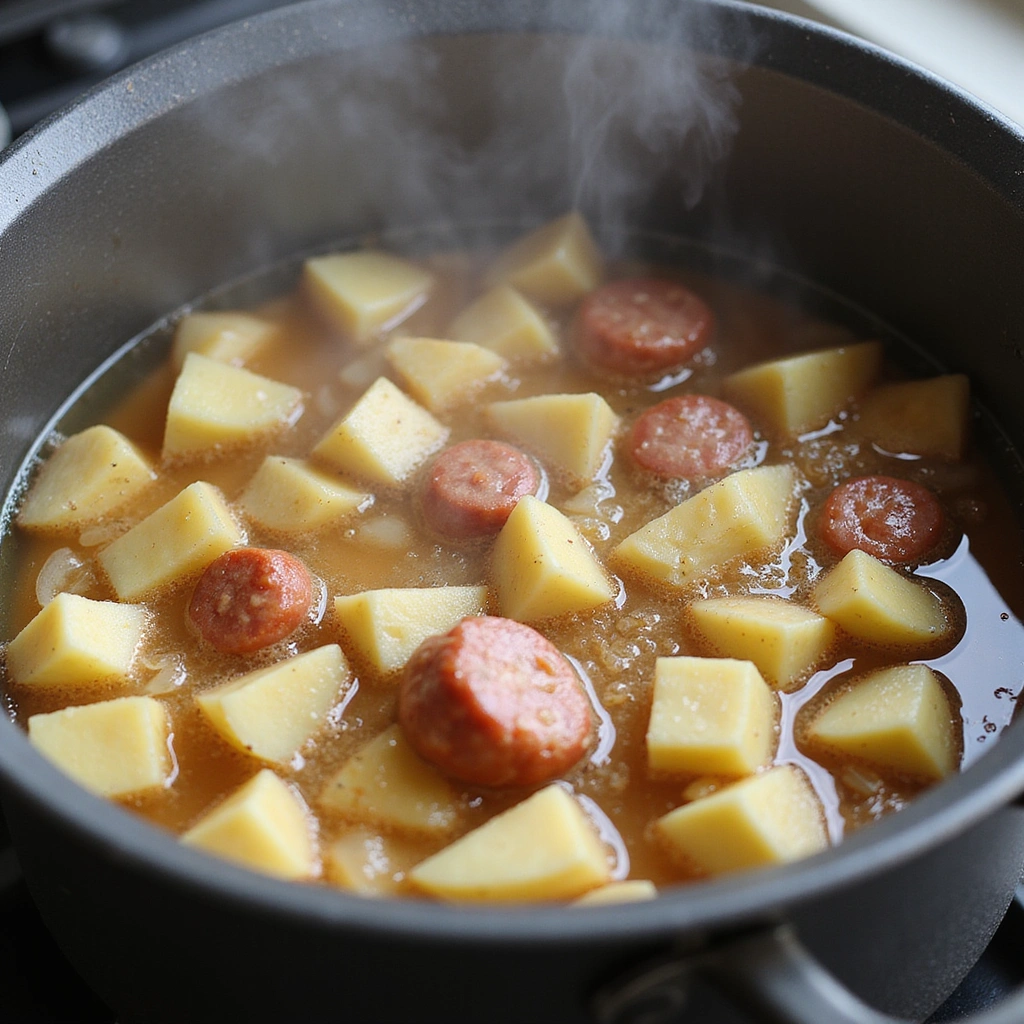
Add the diced potatoes to the pot, stirring to combine with the sausage and onions.
Pour in the chicken broth and bring the mixture to a boil.
Once boiling, reduce the heat to a simmer and cover the pot.
Look for the broth to bubble gently, indicating it’s simmering.
Step 5: Simmer the Soup
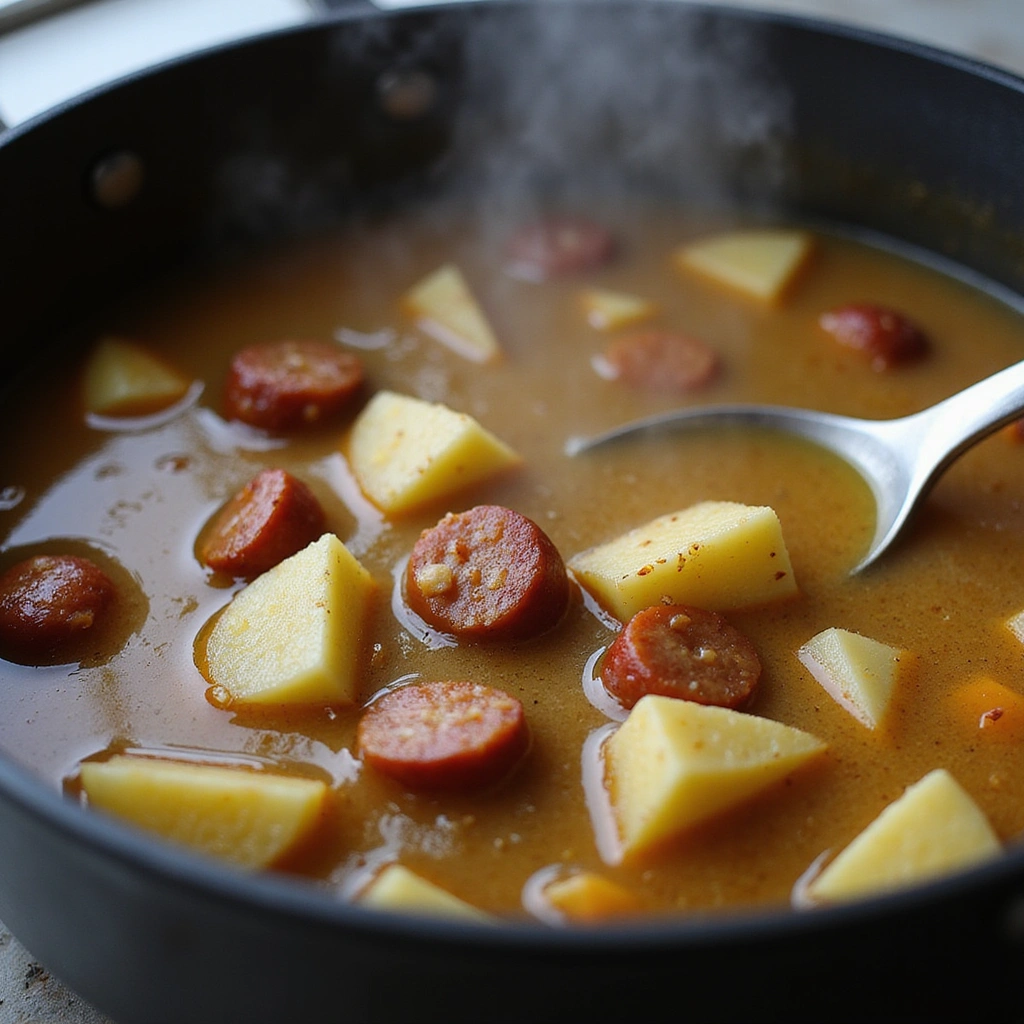
Let the soup simmer for about 15-20 minutes until the potatoes are fork-tender.
Stir occasionally to prevent sticking and ensure even cooking.
You want the potatoes to be soft but not falling apart.
Check for tenderness by piercing a potato chunk with a fork.
Step 6: Add Kale
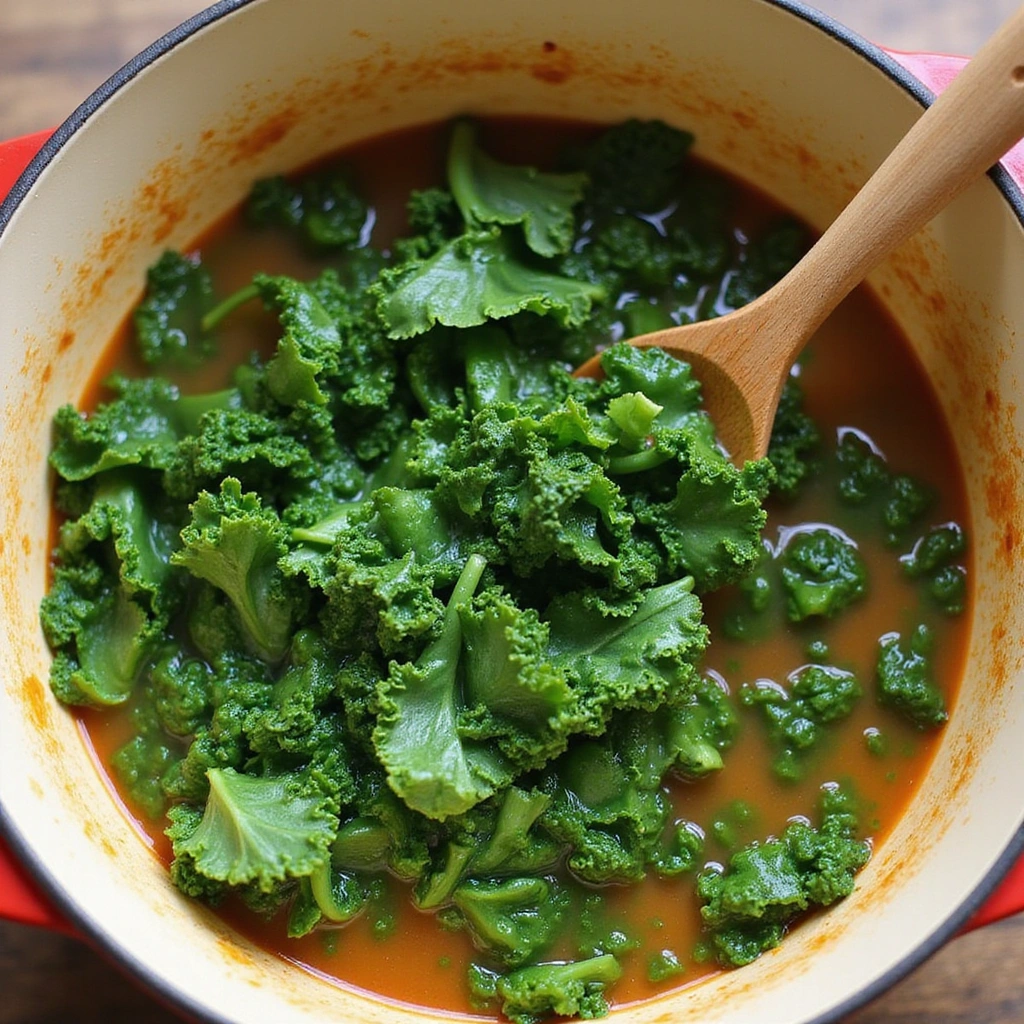
Once the potatoes are tender, add the chopped kale to the pot.
Stir well to incorporate the kale into the soup.
Allow the soup to simmer for an additional 5 minutes until the kale is wilted and tender.
Look for the kale to turn bright green and soften.
Step 7: Adjust Seasoning
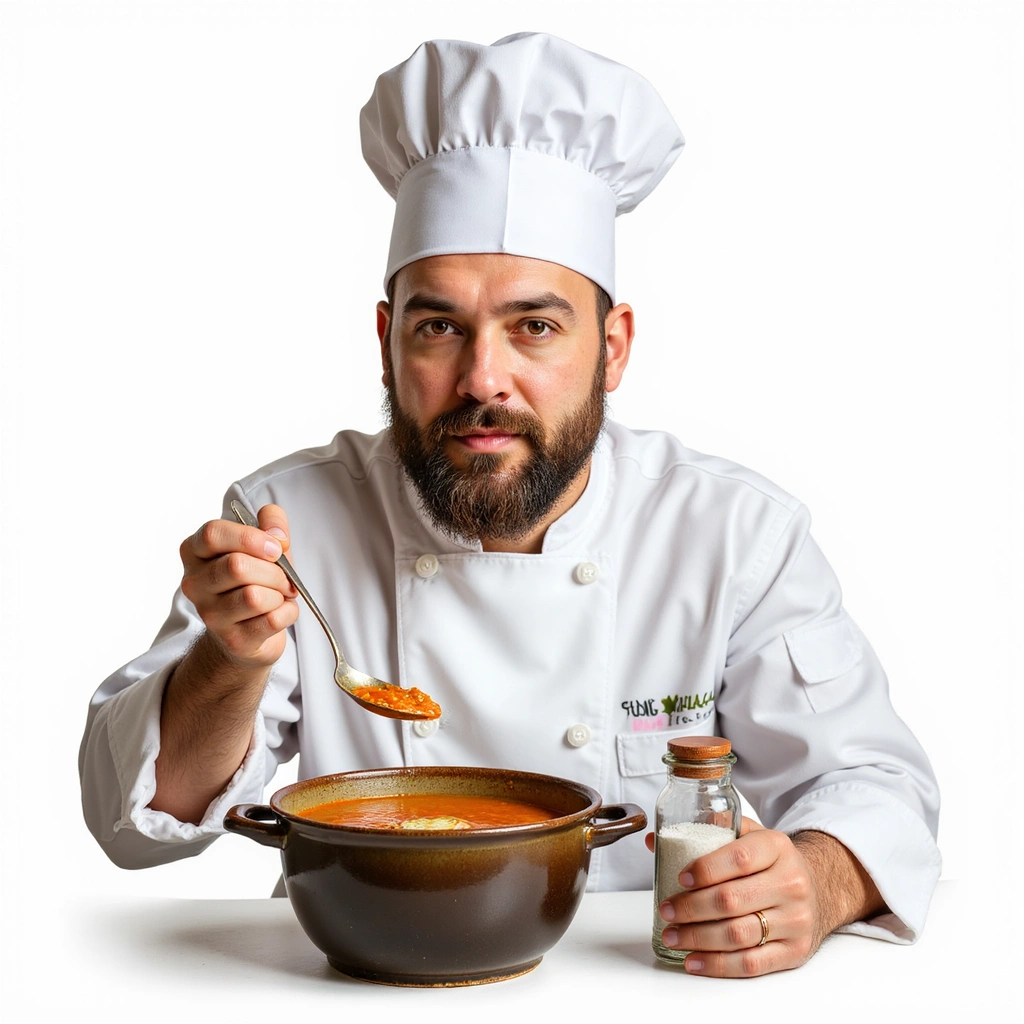
Taste the soup and adjust the seasoning as needed with salt and pepper.
You may also add a splash of cream for a richer flavor if desired.
Stir well to ensure the seasoning is evenly distributed.
Look for a balanced flavor that complements the sausage and kale.
Step 8: Serve the Soup
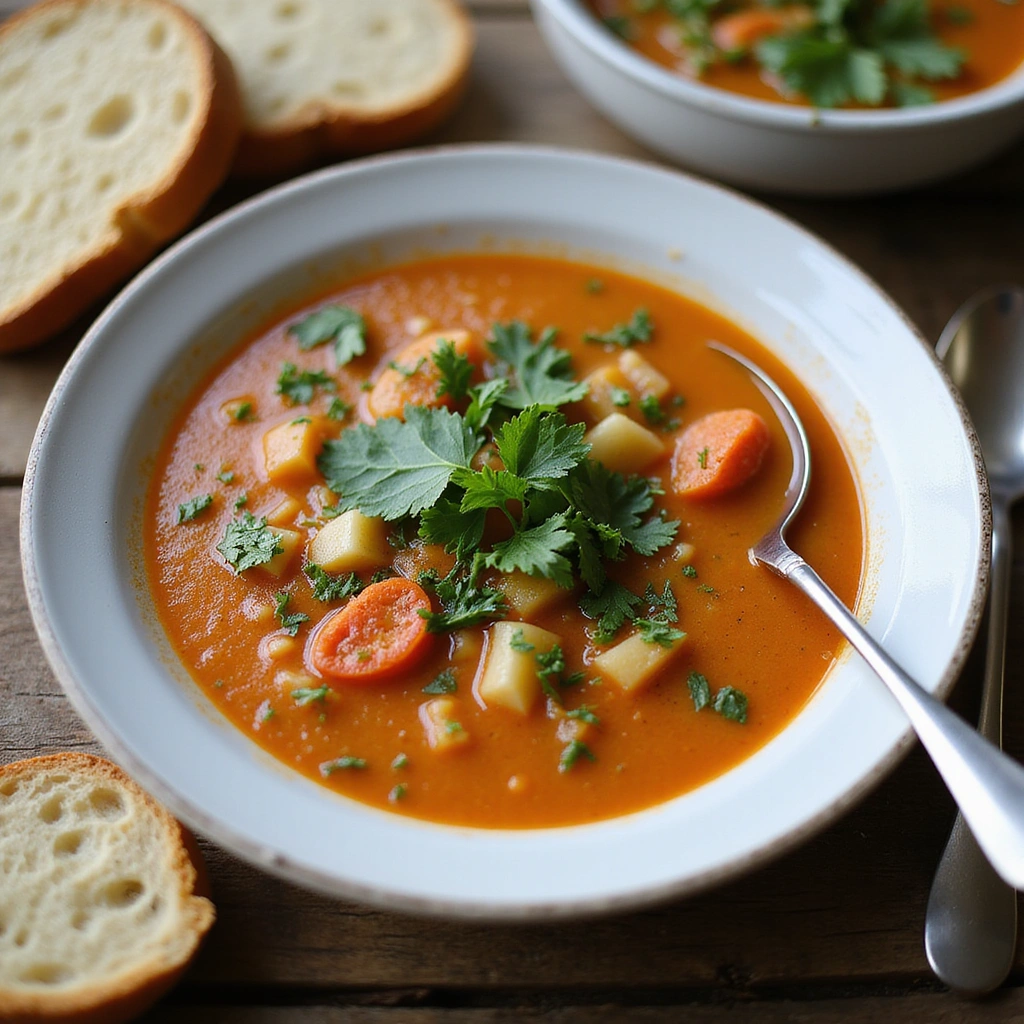
Ladle the soup into warm bowls for serving.
Garnish with fresh parsley or a sprinkle of Parmesan cheese if desired.
Serve with crusty bread on the side for dipping.
Ensure the bowls are hot to keep the soup warm while eating.
Critical Timing and Temperature Guide
Sautéing the Sausage: Cook until well browned, about 7-10 minutes. Look for a deep brown color; avoid undercooking, which can lead to a greasy texture.
Simmering the Soup: Simmer for 15-20 minutes or until potatoes are tender. You want a gentle simmer, as boiling can break down the potatoes too much.
Cooking the Kale: Simmer for an additional 5 minutes after adding kale. It should turn bright green and tender, but avoid overcooking to maintain its vibrant color.
Pro Tips for Tuscan Zuppa Toscana Recipe
• Ingredient Selection: Use high-quality Italian sausage for the best flavor.
• Preparation Secret: Let the sausage rest after cooking to enhance its flavors before adding other ingredients.
• Temperature Management: Ensure all ingredients are at room temperature before starting to help them cook evenly.
• Texture Enhancement: Blend a portion of the soup to achieve a creamy consistency while keeping some chunks intact.
• Flavor Layering: Add a pinch of red pepper flakes for an extra kick, complementing the sausage.
• Make-Ahead Strategies: Prepare the soup a day in advance; flavors will deepen with time.
• Restaurant-Quality Finishing Touches: Drizzle with high-quality olive oil before serving for added richness.
• Equipment Optimization: Use a large pot to allow for easy stirring and simmering without risk of overflow.
Troubleshooting Common Issues
• Texture Too Dense: This can happen if the potatoes overcook. To fix it, add a bit more broth to thin the soup. Next time, ensure the potatoes are just fork-tender.
• Flavors Unbalanced: If the soup tastes bland, it may need more seasoning. Add salt, pepper, or herbs gradually and taste as you go to adjust.
• Sauce Too Thin: If the broth is too watery, simmer uncovered for a few more minutes to reduce it. Balance with additional ingredients for richness if needed.
• Overly Spicy: If the soup is too spicy, balance the heat with a splash of cream or coconut milk. Adding sugar can also help counteract the spice.
• Greasy Soup: If the soup is greasy, skim off excess fat from the top after cooking. Choose leaner sausage for future preparations.
Variations and Regional Differences
• Calabrian Variation: This version incorporates Calabrian chili peppers for a spicier kick, reflecting the southern Italian influence. It often uses different greens, such as escarole.
• Vegetarian Adaptation: Replace sausage with a plant-based alternative and use vegetable broth instead of chicken broth. This version still delivers on flavor while catering to vegetarians.
• Modern Interpretations: Some contemporary recipes incorporate quinoa or farro for added texture and nutrition, changing the traditional ingredients while keeping the essence of the soup.
Food Science Behind the Recipe
• Maillard Reaction: This browning reaction occurs when cooking the sausage, creating complex flavors and aromas. Understanding this helps to achieve the perfect caramelization.
• Emulsification: The cream or olive oil added at the end helps to emulsify the soup, resulting in a rich and velvety texture. This principle is key in achieving the desired mouthfeel.
• Gelatinization: Cooking the potatoes causes the starches to gelatinize, thickening the soup and creating a heartier consistency. This process is crucial for the right texture.
Frequently Asked Questions
What’s the most common mistake people make when preparing Tuscan Zuppa Toscana? The most common mistake is overcooking the potatoes, leading to a mushy texture. To prevent this, check for doneness early and remove them from heat once fork-tender.
Can I prepare components of this dish in advance? Yes, you can chop vegetables and even cook the sausage a day ahead. Store them in airtight containers in the refrigerator until you’re ready to assemble.
How do I adapt this recipe for dietary restrictions? For gluten-free options, ensure the broth and sausage are gluten-free. You can also use dairy alternatives if avoiding lactose.
What’s the best way to store and reheat leftovers? Store leftovers in an airtight container in the fridge for up to 3 days. Reheat gently on the stovetop over low heat, adding a splash of water or broth as needed to restore consistency.
Can I freeze this dish? Yes, this soup freezes well. Allow it to cool completely, then transfer it to freezer-safe containers. Thaw in the fridge overnight before reheating.
What wine or beverages pair best with this dish? A medium-bodied red wine, such as Chianti or Sangiovese, pairs beautifully with the flavors of the soup. The acidity cuts through the richness.
How can I scale this recipe up for a crowd? Simply multiply the ingredient quantities by the number of servings needed. Ensure you have a large enough pot to accommodate the increased volume.
Serving and Presentation Guide
• Traditional Presentation: Serve in rustic bowls, garnished with freshly chopped parsley and a sprinkle of Parmesan cheese. Pair with crusty bread on wooden boards for a homely feel.
• Modern Plating Ideas: Use white or colorful shallow bowls for a contemporary look. Drizzle with high-quality olive oil and use microgreens for garnish.
• Accompaniment Suggestions: A simple green salad with a tangy vinaigrette complements the richness of the soup. Consider pairing with a crisp white wine as well.
• Special Occasion Presentation: For more formal settings, serve in elegant soup plates with artisanal bread on the side. Use decorative herbs or edible flowers for an elevated touch.
Conclusion
Tuscan Zuppa Toscana is not just a meal; it’s a warm embrace on a chilly day.
I encourage you to try this recipe and experience the bold flavors and comforting textures for yourself.
With each spoonful, you’ll be transported to the charming kitchens of Tuscany.
Recipe Tags:
gluten-free
easy
one-pot
dinner
healthy
budget-friendly
quick-prep
italian
comfort-food
protein-rich
make-ahead

